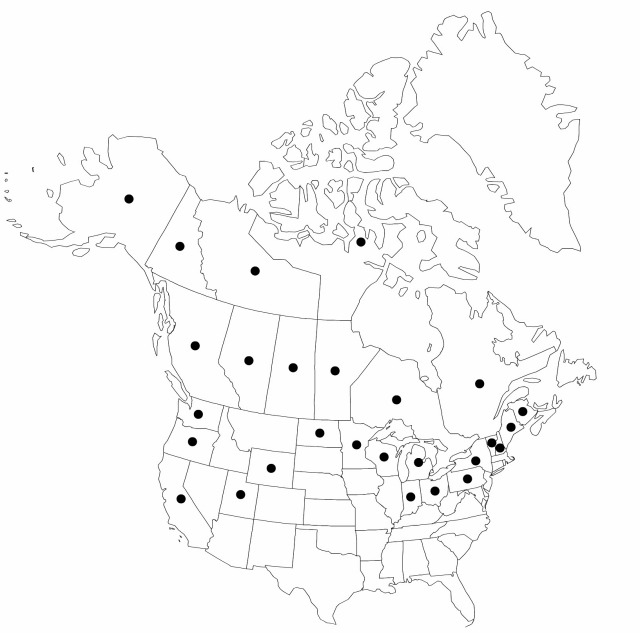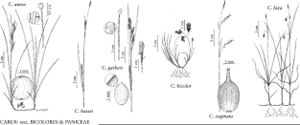Carex garberi
Rhodora 37: 253. 1935.
Culms 5–40 cm. Leaves: blades 5–15 (–25) cm × 1–2.5 (–3.5) mm. Inflorescences: proximal bracts leaflike, exceeding inflorescences, sheaths to 10 mm; lateral spikes with 9–30 perigynia, approximate or proximal distant, dense, 7–15 × 3–5 mm; middle internodes 0.3–0.7 mm; terminal spike usually gynecandrous, with at least 1/3 of flowers staminate, rarely entirely staminate, sessile or short-pedunculate, 6–15 (–20) mm, (1.2–) 1.5–2.5 mm wide in staminate portion. Pistillate scales ascending, medium to dark-brown with paler midvein and hyaline margins, ovate-circular, 1.7–2.7 × 1–1.9 mm, apex obtuse to acute, sometimes shortly mucronate. Staminate scales brown with paler midvein and hyaline margins, oblongovate, (2–) 2.5–3.7 mm, apex obtuse to acute. Perigynia ascending, white, elliptic-obovate, 2–3 × 1.2–1.8 mm, densely papillose. Achenes elliptic-circular, 1.4–2 × 1–1.5 mm.
Phenology: Fruiting summer.
Habitat: Moist shores, meadows, fens, on base-rich soils
Elevation: 0–1500 m
Distribution

Alta., B.C., Man., N.B., N.W.T., Nunavut, Ont., Que., Sask., Yukon, Alaska, Calif., Ind., Maine, Mich., Minn., N.H., N.Y., N.Dak., Ohio, Oreg., Pa., Utah, Vt., Wash., Wis., Wyo.
Discussion
Selected References
None.
Lower Taxa
"shortened" is not a number.
